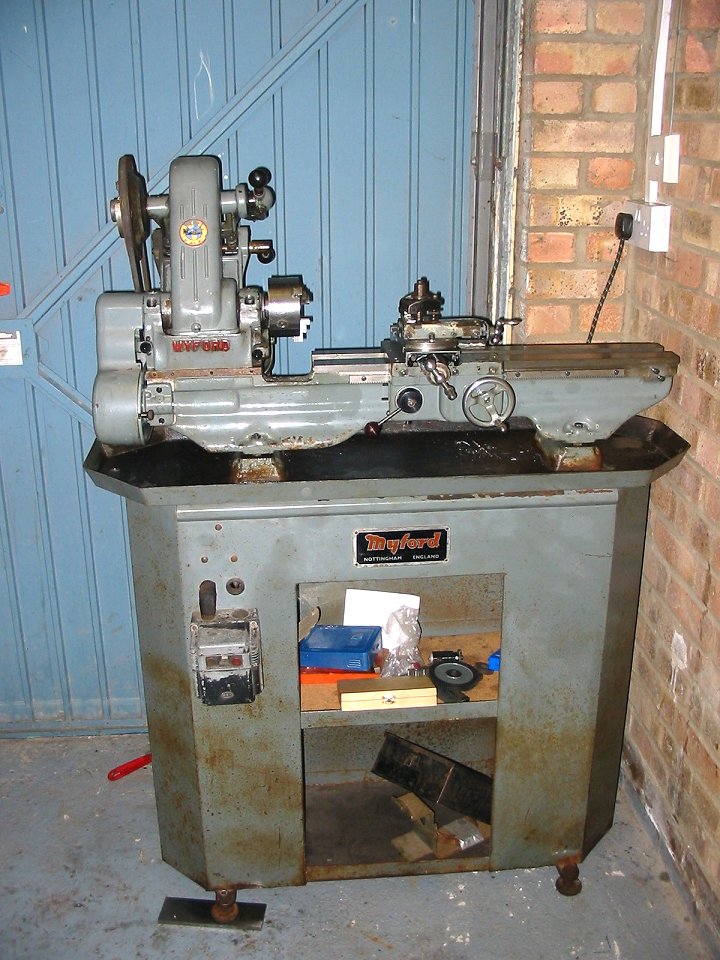The Lathe Arrives
As you can see, it wasn't in the best condition when I bought it. It had spent the past few years in the back of a garage under a leaky roof with scant covering, and the only thing that saved it being any worse was the congealed way oil and grease covering it all over, and the 'sacrificial swarf' covering the base of the tray.
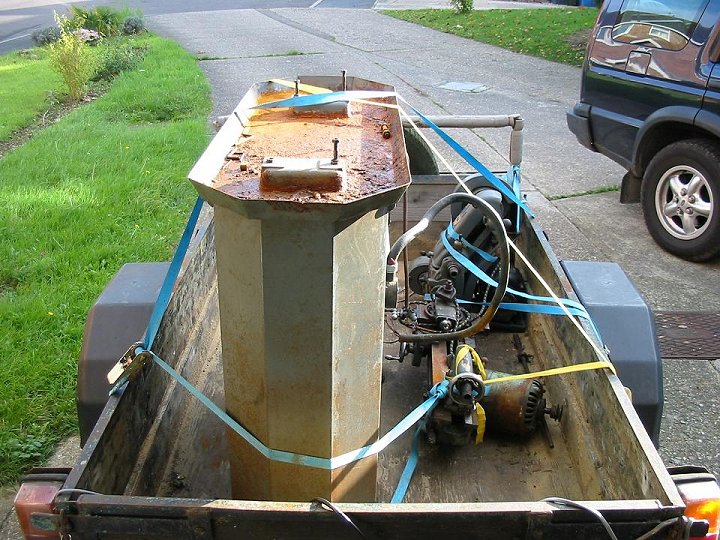
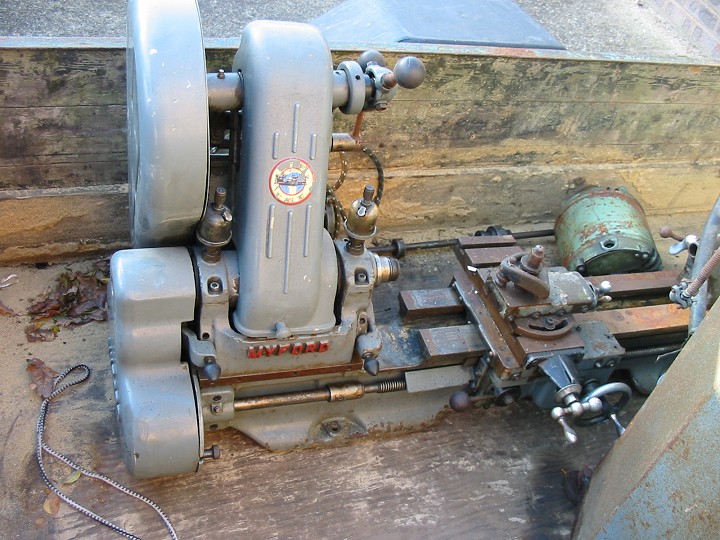
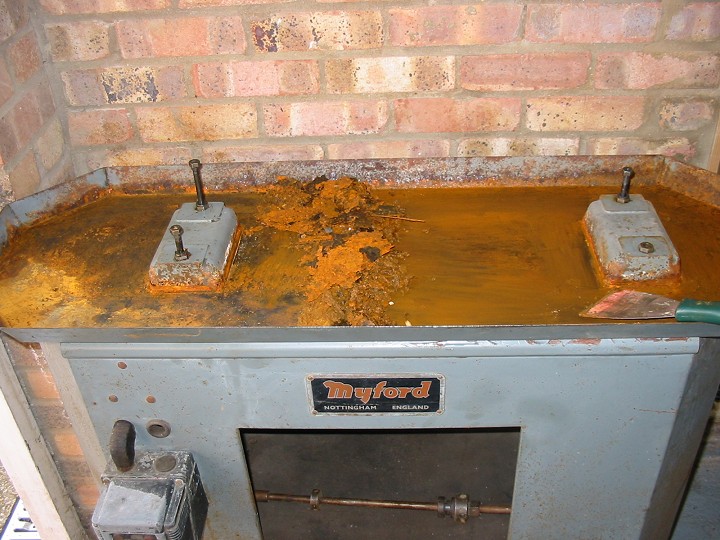
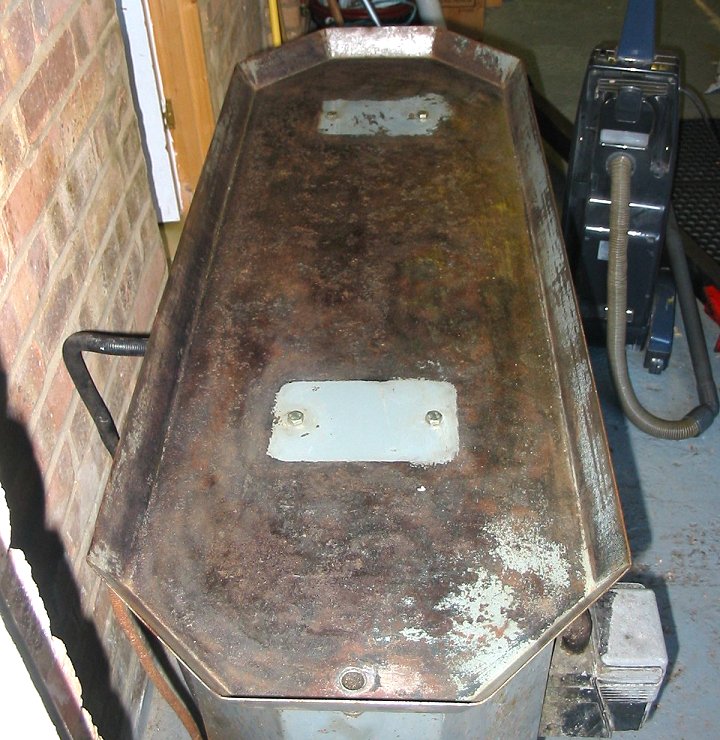
Now it was time to look at the Lathe itself as I could now get it lifted up on to the clean stand for a more thorough investigation. First impressions were not good, as witnessed by the following pictures. The top slide was practically jacked off, and initially it looked like a horror story underneath.
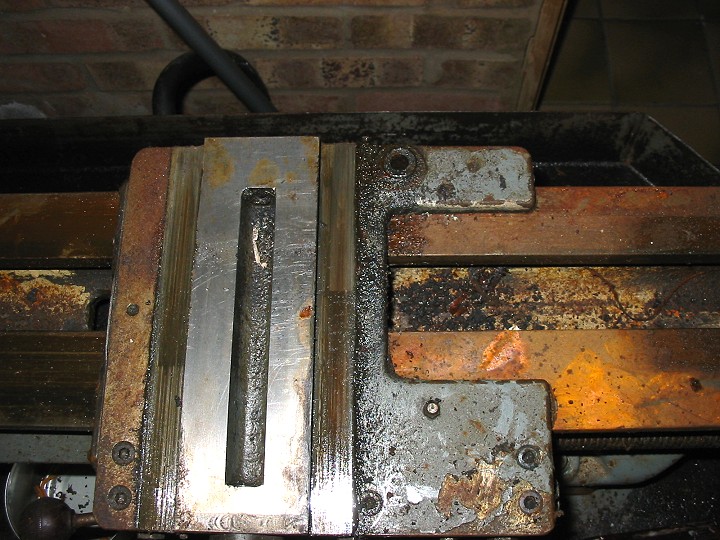
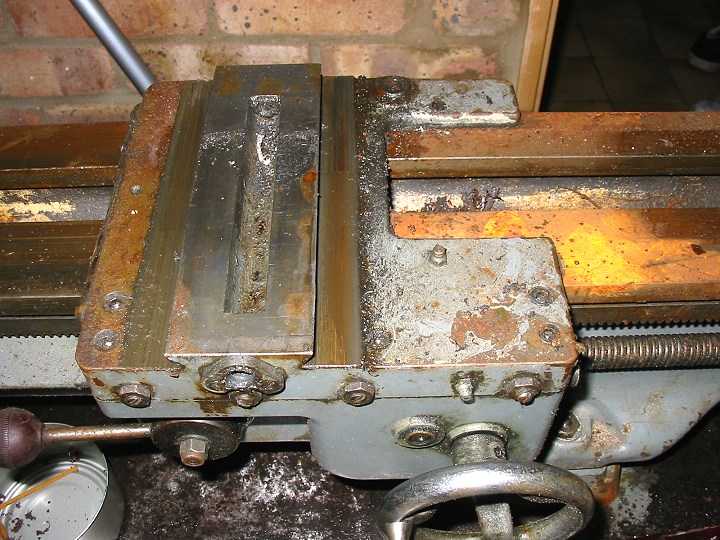
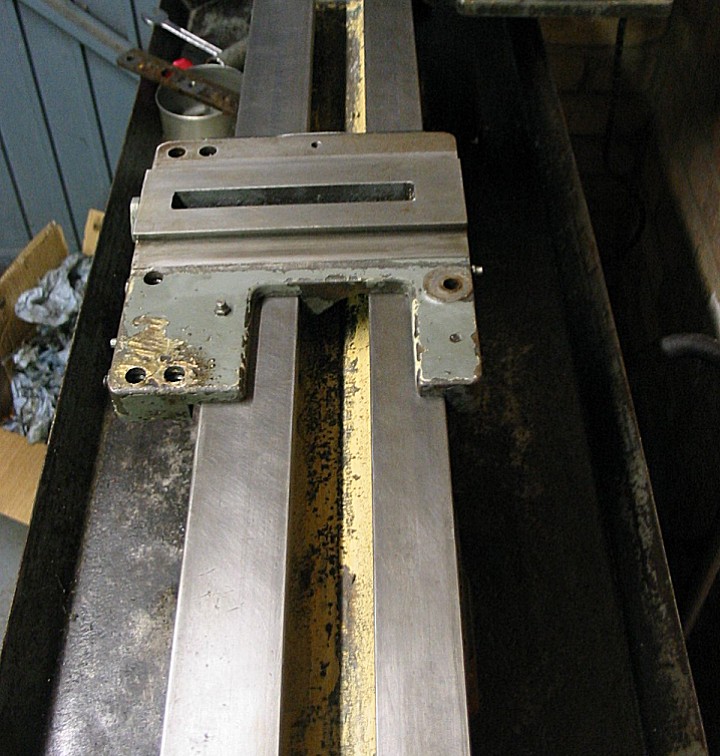
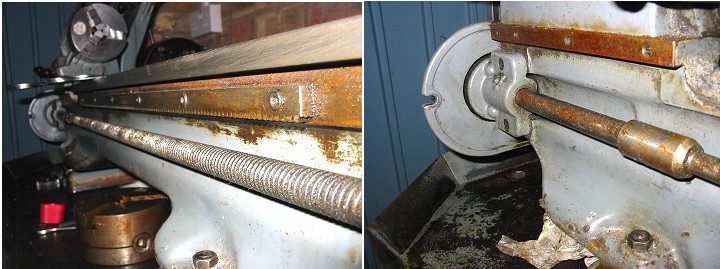
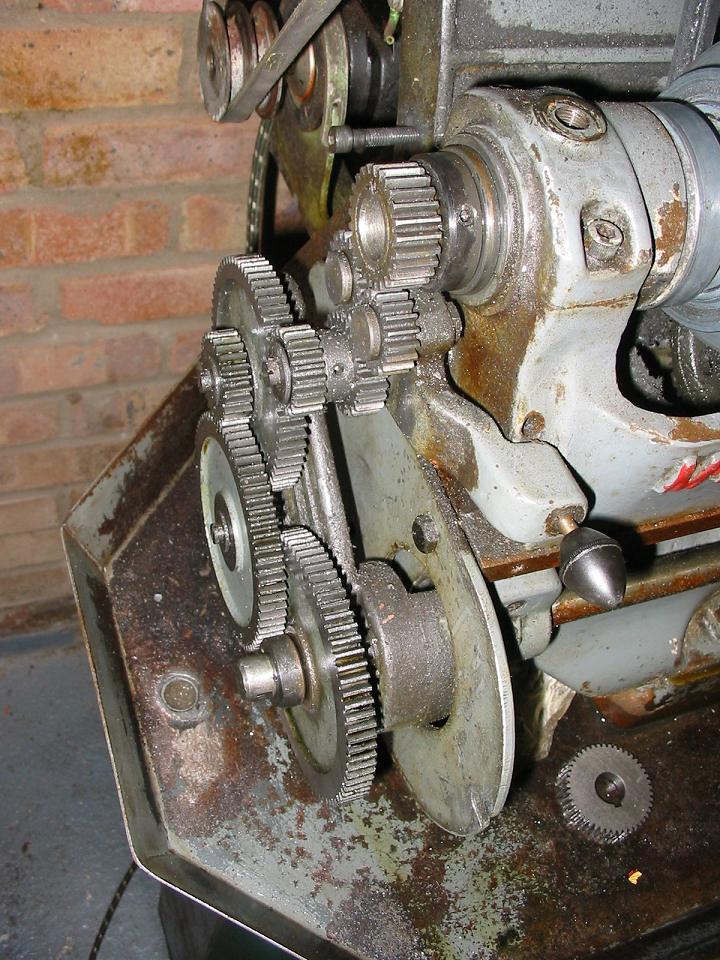
After another entire day spent cleaning, de-rusting, lubricating, and adjusting the ML7 it was put into use. The ML7 didn't have a Chuck with it when it arrived but I managed to buy a nice Pratt Burnerd 4" 3-jaw with direct mounting (no backplate so less overhang) from G&M tools, which had inside, outside, and soft jaws.
After some rudimentary levelling it stood in the corner of the garage (see below) and was used for the next 6 months turning parts for jigs and fixtures for use in my business, and making some other useful little tools. It was a complete joy to use after the awful Chinese Lathes (DB10G) from Chester that I had for less than 2 weeks. However I'd always intended to more fully restore it, and this was planned to start in line with Myfords re-grinding schedule, which comes around about 3-4 times a year, so the restoration is covered in stages on the next pages.
